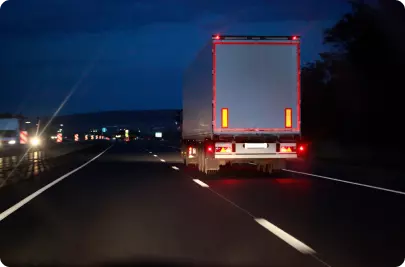
A lot of us are afraid of technology because we’re afraid of change. If we’ve been doing something one way for a long time, it’s hard to stop and try something new. We get it.
But change is what keeps us on our toes. It’s what keeps businesses modern and competitive, and it’s what makes the difference between a successful business and a stagnant one.
Over the next few weeks, we’ll be talking to some amazing individuals who are embracing software — specifically route optimization software — to streamline their operations and grow their businesses.
This week we’re chatting with Peter Levitt, owner and general manager of Autoshred — a paper shredding business in New York and New Jersey.
1. Your drivers are veterans on the road. How do you get them to trust routing software?
To say my drivers know New York is an understatement — with almost 40 years combined of driving experience, they know the city like the back of their hands.
But, hey they’re slowly trusting route optimization and we’re embracing it. It’s extremely important to work as a team when planning your routes. We listen to the software, but when my drivers have a better way, they ask me to tweak the routes and the software makes it real easy to accommodate that.
2. What are some of the biggest challenges when it comes to route planning?
One of the biggest challenges I face is planning on the fly. When a truck breaks down or we’re running late or a new stop is added, I have to act fast. Crying is not an option.
Luckily, with route planning software, I can quickly and intelligently add a new stop and send it to my driver without having to create a whole new route.
Another challenge is dealing with addresses you don’t recognize. It’s always important to double check your delivery addresses before dispatching it to your drivers. You don’t want an angry customer AND an angry driver!
3. How did you plan your routes before Routific?
The previous owner of my business relied on Map Point — Microsoft’s old (and I mean old) mapping software.
The main reason I use Routific is because my drivers now spend considerably less time on the road while saving fuel. That saves me a ton of money, and gets them home earlier. A major win-win for everyone.
4. Any tips and tricks for aspiring route planners?
Plan your deliveries to a T. Make sure you’ve taken into consideration the capacity of each truck. One truck could be more efficient at delivering certain loads than another, which can save you time and fuel.
Pay attention to your time windows. This is a large chunk of your route planning. Your customers are your number one priority, and making sure your drivers arrive at a convenient time is extremely important for your relationship. I cannot stress how vital it is to give them smaller time windows.
5. Can you quantify the impact route planning software has made on your business?
Look at the spreadsheet below. All I did was look at three months (Aug to Oct) of how the former owner performed (2015) and compared it with me (2016).

You can see I have more transactions, which should have resulting in more gas as I’m driving more miles, correct? Yet, look at my fuel spend. Bottom line: my volume of business is up 11%, my fuel spend is down 30%. These are not subjective hypotheticals. This is the raw data.
And it says your solution cut my unit price by 25%. Who knew?

Peter Levitt’s business, Autoshred, increased their service calls yet spent less on fuel.
Frequently Asked Questions
Related articles
Liked this article? See below for more recommended reading!

Optimizing Operations: A Complete Guide to Dispatch Management in 2024



